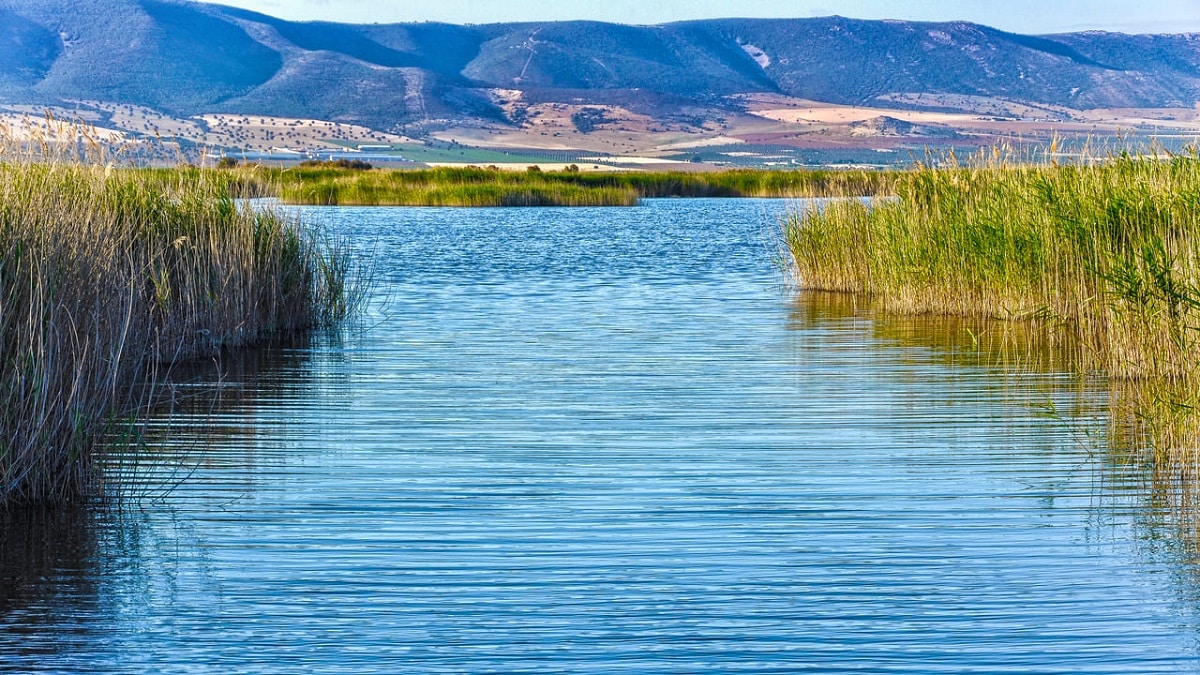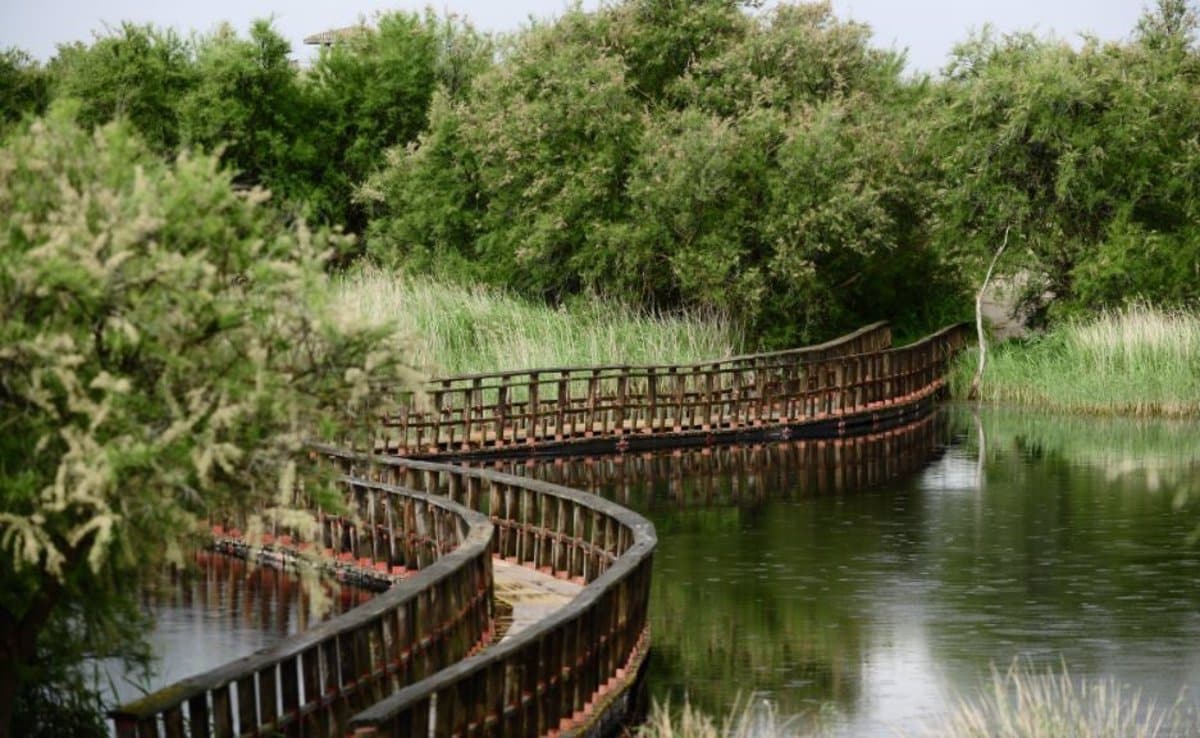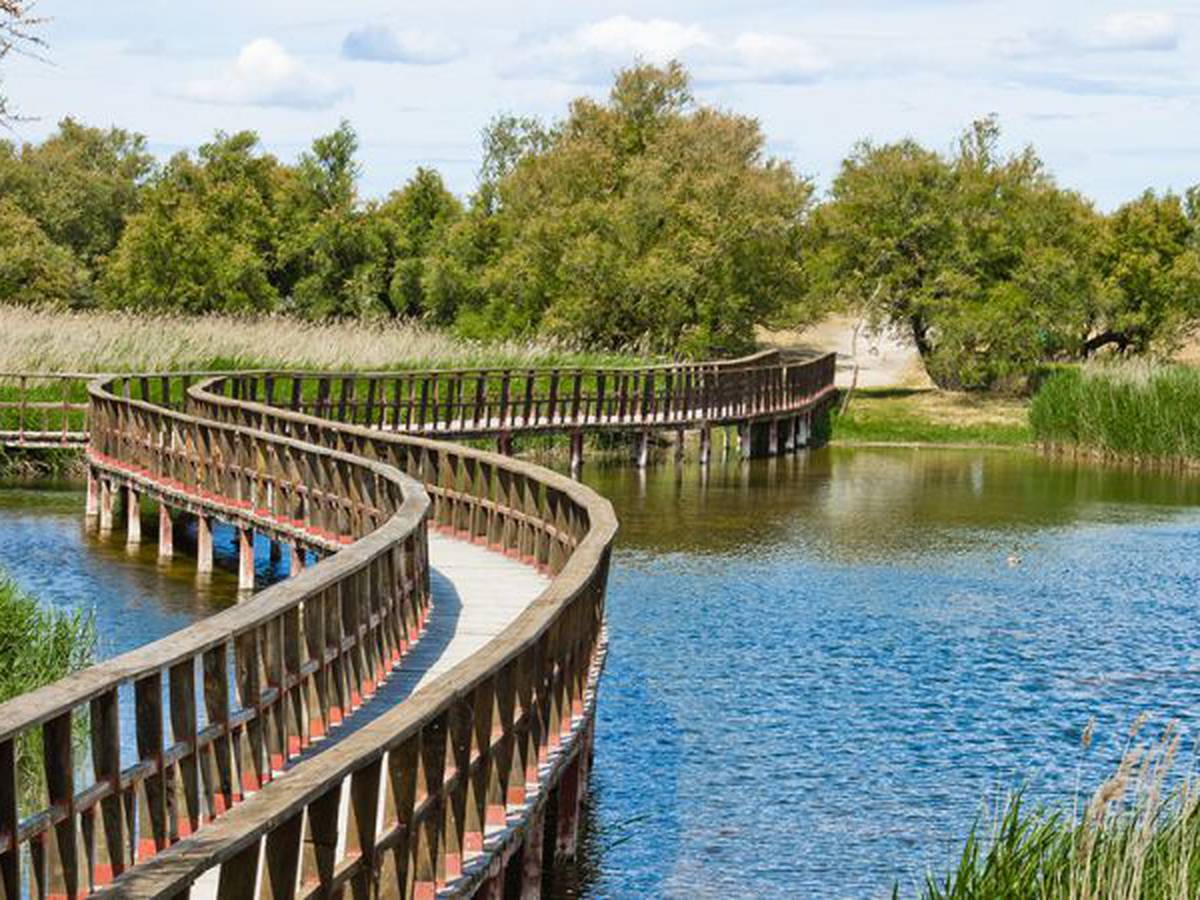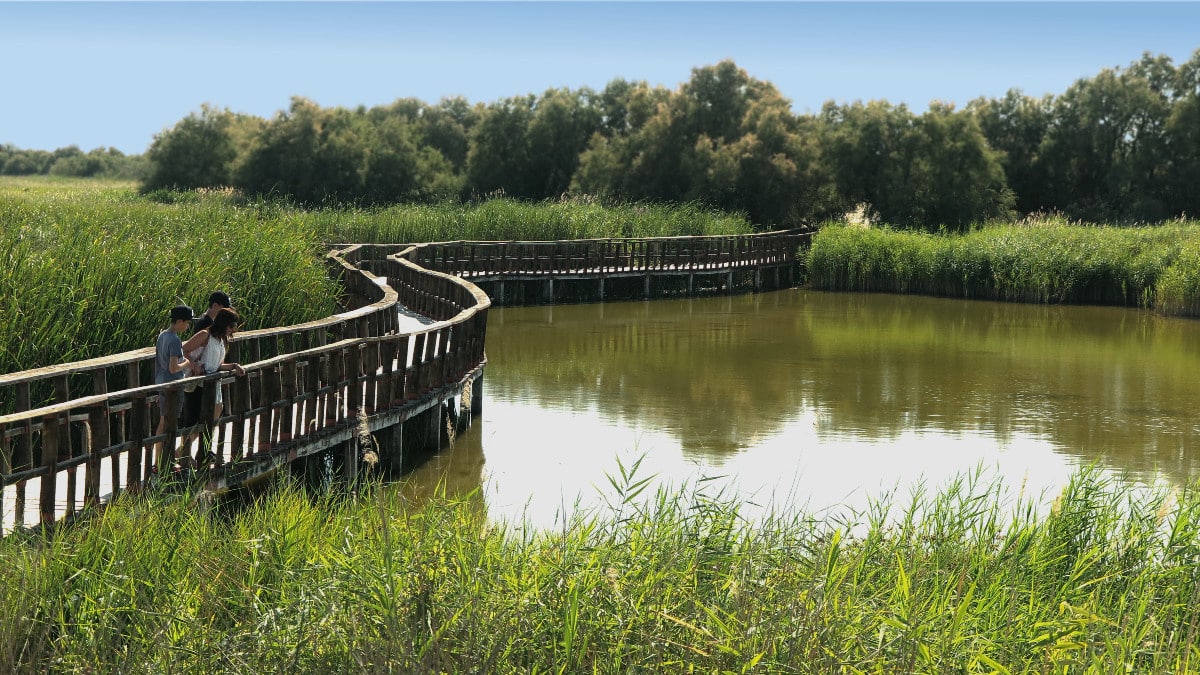
In our natural environments protection figures are created to conserve landscapes, vegetation and fauna. In this way, we try not to degrade nature and conserve it as best as possible. One of these quite famous environments is the Tablas de Daimiel. However, many people do not know what are the Daimiel Tables or how important they are.
For this reason, we are going to dedicate this article to telling you what the Daimiel Tables are, what their characteristics, flora, fauna and importance are.
What are the Daimiel Tables

The Tablas de Daimiel National Park is a Spanish national park that protects the wetland of the same name, Las Tablas de Daimiel. It is located in Demir and Villarubia de los Ojos, in the province of Real, in the Autonomous Community of Castilla-La Mancha. It is also part of the ZEPA and the La Mancha Húmeda Biosphere Reserve.
Las Tablas de Daimiel is the last representative of the ecosystem known as the fluvial table, formed by the overflow of the Guadiana and Gigüela rivers at the confluence, favored by the lack of unevenness in the terrain. With its announcement, it represents a great step forward in the protection of one of the most valuable ecosystems of La Mancha, thus ensuring the survival of the birds that use these spaces as wintering areas, mancada and nesting, thus creating a complete area for waterfowl.
The Tablas de Daimiel National Park is located in the heart of La Mancha, in the province of Real, between the municipalities of Daimiel and Villarrubia de los Ojos.
Characteristics and cultural values

It is the last representative of the ecosystem known as the fluvial table, formed by the overflow of the Guadiana and Gigueira rivers at the confluence, favored by the lack of unevenness in the terrain. With its announcement, a giant step is taken in the protection of one of the most valuable ecosystems of La Mancha, thus ensuring the survival of the birds that use these spaces as wintering, mancada and nesting areas, creating an integral space for birds aquatic.
decades ago, the balance between people and wetlands was upset. The act of draining the Wet Spot preceded the overexploitation of the water that had been stored in the ground for centuries.
The continuous extraction of water well above the average annual recharge has caused the massive release of the aquifers, causing a progressive drop in the water table, the main consequence of which is the cancellation of the natural discharges that occurred in the Ojos del Guadiana and in the Daimiel tables
Various measures have been taken by the government to restore the natural functions of the ecosystem and its evolution has been rigorously analyzed. The conservation of Las Tablas de Daimiel should not be a conflict between economic interests and conservationist interests, but a guarantee of the rational and sustainable development of a renewable resource as important as water.
Until the 14th century, one of the most important human transformations in Las Tablas and its surroundings was the mill. There are up to XNUMX mills, some dating from the Middle Ages. The mill was a social center where wheat was grown, fish and game were sold, and people could eat, sleep, and trade goods.
It represents ecosystems associated with continental humid regions. This ecosystem is home to many species, including flora and fauna. Among the flora, aquatic plants are the basic substrate of Las Tablas de Daimiel, and the only trees present are red willows. The tables is home to a wide variety of waterfowl. The most adapted to water are the Great Crested Grebe, the Little Grebe and the Black-necked Grebe. Depending on the time of year, herons, egrets, herons and various Iberian ducks can be seen.
Flora of the Daimiel Tables

Large extensions of masiega (Cladium mariscum) are distributed harmoniously with the free surface of the water. reedbeds (Phragmites australis) they are highly adaptable and colonizing, spreading to shallower areas and to almost the entire outer periphery of the park. Among them, you can see swarms of reeds (Typha domingensis), which inhabit the depressions.
Until a few years ago, the Laguna de La Mancha was periodically flooded with temporary floods hitting the ground. Today, they are seriously threatened by the expansion of cultivation, although they are still abundant in national parks. Limonios are mainly species native to salt marshes and salt marshes, which are habitat types of priority concern in the EU and therefore need to be protected.
Some taxa endemic to the province of Ciudad Real are found within the national park and are currently highly threatened by the expansion of crops outside the reserve.
One of the most characteristic formations of the National Park are the Chara meadows, formed by different species of the Chara genus known as eggs, which they can form an almost continuous tapestry on the submerged bottom. The only arboreal vegetation is made up of red willows, which form small forests on moist soils that can withstand periods of flooding and a certain level of soil salinity.
Management of aquatic vegetation
In order to maintain the structure and distribution of the vegetal cover of Tablas de Daimiel in its original state, altered by the modifications that its hydrological network has undergone in recent years, A series of actions have been carried out to control dynamic vegetation, characterized by the excessive proliferation of certain plant species, which, due to their invasiveness and resistance to seasonal desiccation, constitute a substitute for other more vulnerable plants.
This relationship is established between species such as the reed, the red willow and the cattail, but not with others. This process is carried out gradually from the marginal areas, where the water temporarily disappears, and until recently, the lack of water affected large areas of the park, so that the invasive species reach the interior space, called "table", dwhere is the only extant plants under water.
The final result of this process is the disappearance of these "tables", areas of great importance for the permanence and permanence of aquatic birds, and the development of ovoid grasslands that make up the key. Elements of the food chain of an ecosystem.
In addition, the main channels can be blocked, as well as the closure of "trails" and natural channels that allow the flow between lagoons and prevent the isolation of certain bodies of water. Therefore, the most important activities are the opening and maintenance of the traditional tables of invasive vegetation, the elimination of vegetable residues and the control of burning to favor their regeneration, only under very specific conditions.
I hope that with this information you can learn more about what Daimiel tables are and their characteristics.